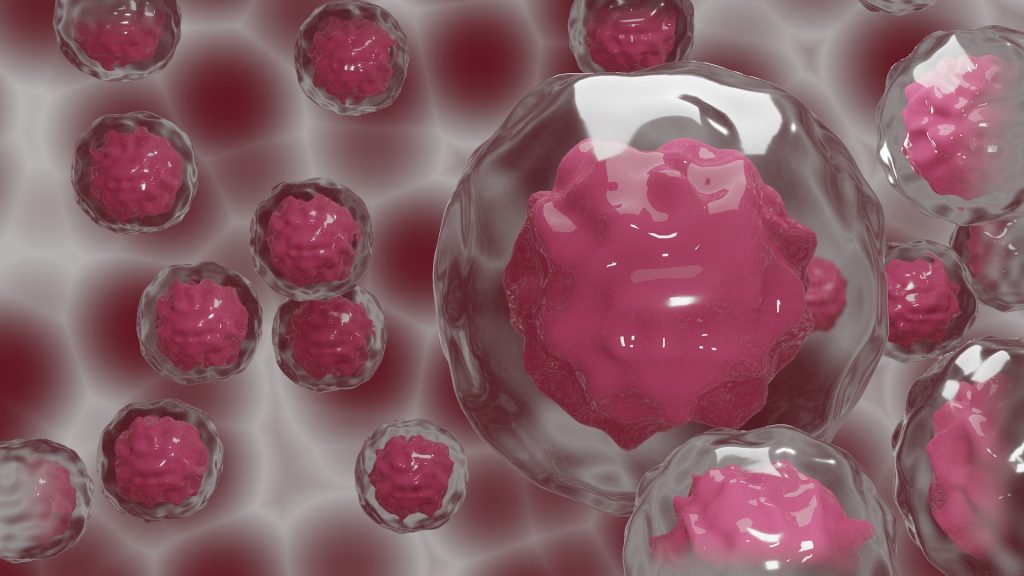Lenvatinib Produces Impressive Results Against Tough Tumours

Lenvatinib, a multitargeted tyrosine kinase inhibitor (TKI) induced a strong tumour response in patients with advanced gastrointestinal or pancreatic tumours, according to results from a phase II trial.
The study focused on previously treated advanced gastroenteropancreatic neuroendocrine tumors (GEP-NETs). An overall response rate (ORR) of 29.9% was seen in the trial, with a particularly high ORR — 44.2% — in patients with pancreatic NETs.
“This study provides novel evidence for the efficacy of lenvatinib in patients with disease progression following treatment with other targeted agents, suggesting the potential value in the treatment of advanced GEP-NETs,” wrote Jaume Capdevila, MD, PhD, of Vall Hebron University Hospital in Barcelona, and colleagues.
TKIs are a group of pharmacologic agents that disrupt the signal transduction pathways of protein kinases by several modes of inhibition. Since sunitinib maleate (Sutent), another multitargeted TKI, was approved ten years ago, investigators have been evaluating newer-generation TKIs that target VEGF receptors (VEGFRs), among other receptors, both in pancreatic and non-pancreatic NETs.
Lenvatinib targets VEGFR 1-3, fibroblast growth factor receptors (FGFR) 1-4, and platelet-derived growth factor receptor alpha.
The researchers noted that studies have demonstrated its particular effectiveness against FGFR-1, which is a key driver of resistance to antiangiogenic drugs, “suggesting that it could potentially also reverse primary and acquired resistance to anti-VEGFR treatments or to other targeted agents.”
A total of 111 patients were enrolled in the study; 55 had histologically confirmed grade 1-2 pancreatic NETs, while 56 had gastrointestinal NETs. Patients were administered 24-mg lenvatinib once daily until disease progression or treatment intolerance. Median follow-up was 23 months.
The ORR was 16.4% for patients with gastrointestinal NETs, and median duration of response was 19.9 months for patients with pancreatic NETs and 33 months for gastrointestinal NETs. The median progression-free survival (PFS) for both groups was 15.7 months.
These results compare well with PFS outcomes reported in phase III trials, including those evaluating sunitinib and surufatinib, the authors noted.
“Interestingly, the ORR in pancreatic NETs was 44%, a rate not seen before with targeted agents,” Jonathan Strosberg, MD, head of the neuroendocrine tumor division at Moffitt Cancer Center in Tampa, told MedPage Today.
Dr Strosberg, who was not involved with this research, noted that the study group had been heavily treated beforehand, and that 29% had received prior sunitinib. “In contrast, the response rates with other TKIs have been <20% in this population, even in less heavily treated populations. The ORR for gastrointestinal NETs was more modest, but still impressive,” he added.
The most common grade 3/4 adverse events was hypertension (22.7%), while a majority of patients needed either a dose reduction or a pause.
“This suggests that lower starting doses might be considered in this population, and that particularly close monitoring of blood pressure is necessary,” said Dr Strosberg.
The study results “suggest that lenvatinib is more than just a ‘me-too’ competitor to sunitinib,” he noted. “It actually seems to have superior activity, potentially due to its ability to target both the VEGF and FGF receptors. Moreover, it appears to have activity in patients who have progressed on sunitinib. Randomized phase III studies with this drug are warranted, both for pancreatic and GI/lung NETs.”
Source: MedPage Today
Journal information: Capdevila J, et al “Lenvatinib in patients with advanced grade 1/2 pancreatic and gastrointestinal neuroendocrine tumors: results of the phase II TALENT trial (GETNE1509)” J Clin Oncol 2021; DOI: 10.1200/JCO.20.03368.




